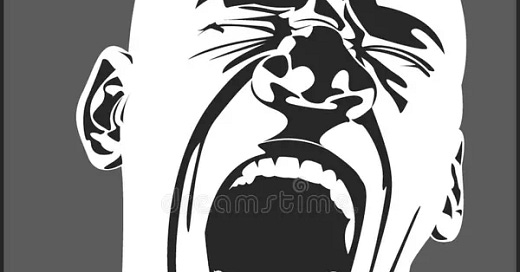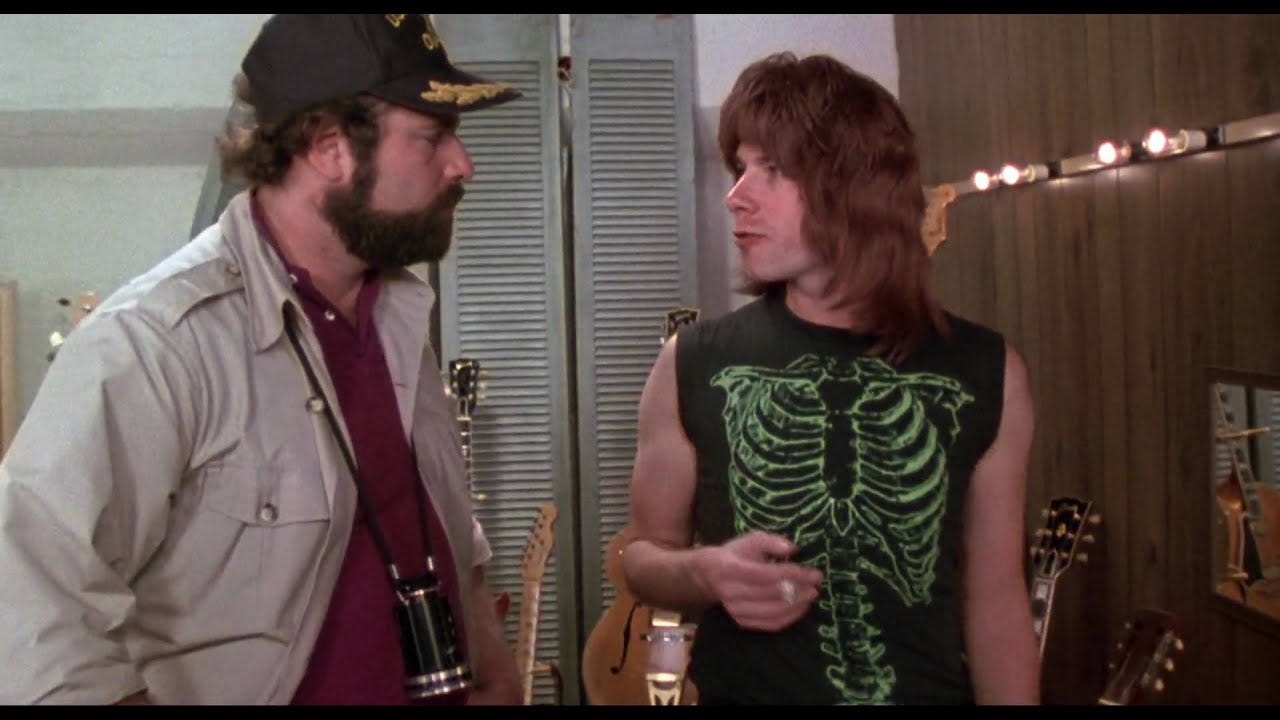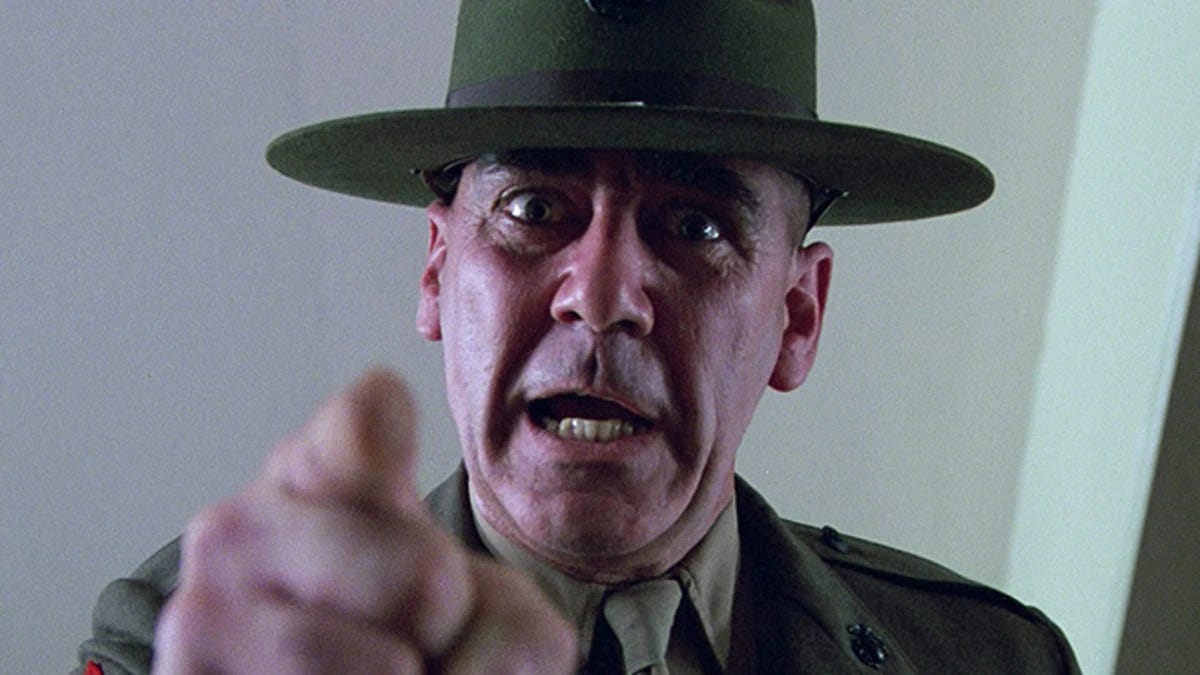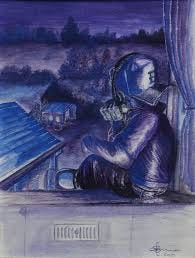Your dojo should be a place of sounds, not silence. Smacks, yelling, slams, shouting. Every once in a while, it should quiet down as knowledge is shared or fighters mentally prepare themselves for the workout, but soon enough that silence should be drowned in the rock and roll of loud, violent people putting in the work.
There’s the conditioning side of training, where planking makes you wish you were at home watching old episodes of The Golden Girls on Amazon Prime instead of torturing yourself with calisthenics; it’s times like that where releasing your inner Spartan with some war cries just helps you go further in your training.
And then there’s the self defense side, which I described here as being different from the “traditional” and “sport” side of Kajukenbo. This is also where a lot of Kajukenbo talks about a “primal instinct”.
Our school’s first grab art defense works like this: your training partner grabs your lapel and pushes you back, you step back with one foot and grab the target’s elbows, and then you launch a front kick to his main exhaust port. Unfortunately, most people only practice this with a partner who just stands there while you kick them, and that’s no good - Grab Art practice should be louder than Spinal Tap’s amps (the ones that go up to 11).
If you’re teaching the class, try having your attackers shout bloody murder as they run at the student practicing, before they grab the lapel. This is the time for everyone to practice their war face. You’re not just practicing the combo; you’re learning to deal with the adrenaline dump of actual violence, and to do that we gotta make the training real.
But it’s not just screaming. I have a sucker punch module I teach students with information I picked up from Hoch Hochheim, and it consists of various ambush hits. The thing to remember is that talking is part of how you set up an ambush. When working self defense (not sport, not tradition), students need to develop their gift of gab and learn how people will verbally distract them to make a sucker punch work.
Defensively, there’s also Tim Tackett’s lesson on verbal jiujutsu, here, worth a two-minute watch if you haven’t seen it yet. This is part of self defense too, so remember: self defense is never silent. Your training should reflect that.
Kids on the Mat: Every Tough Guy’s Nightmare
And then there’s kids. Oh God, teaching kids.
It’s like a modern-day comedy to watch military-grade Kajukenbo practitioners whose spirit animal is Gunnery Sergeant Hartman try to teach a pack of screaming hyenas…err, sorry, kids…in a dojo. If they have the patience and perseverance, a lot of those drill-sergeant types will bring an incredible level of discipline to the kids, getting them to shut up, sit down, listen, and practice - all without getting arrested for child abuse.
And that discipline is needed, but not necessarily for the reason you might think.
Of course, with no discipline on the mats, injuries happen and time gets wasted. There’s also the proud honor that comes with being part of a group so tightly knit they move like a hive mind made of individuals able to think for themselves. At the same time, there’s a “teacher” mistake that often pops up in classroom education in schools and can pop up in the dojo if you’re not careful: the idea that a quiet classroom is a good thing.
Put simply, if a school classroom is quiet it’s more likely the students are sleeping than actually learning. Bringing that to the dojo: is your goal to create robots or fighters? To create a cult or to help your kids navigate the modern day?
A lot of instructors have expressed something along the lines of the following statement to me when it comes to teaching: “Teaching kids (and this feeling gets worse the younger the children are) is a hassle but something we have to do. It’s rewarding, and I love seeing what the kids become, but it’s a headache.”
I received a multiple-subject teaching credential in California and have experience teaching in the dojo and in classrooms for years, so if I may, check out my thoughts, based on experience.
Some of the best high school teachers would be terrible at teaching kindergarten. Some of the best kindergarten teachers would be terrible at teaching high school. Junior high school teachers are a whole different beast who should be feared and respected as much as a local gang leader.
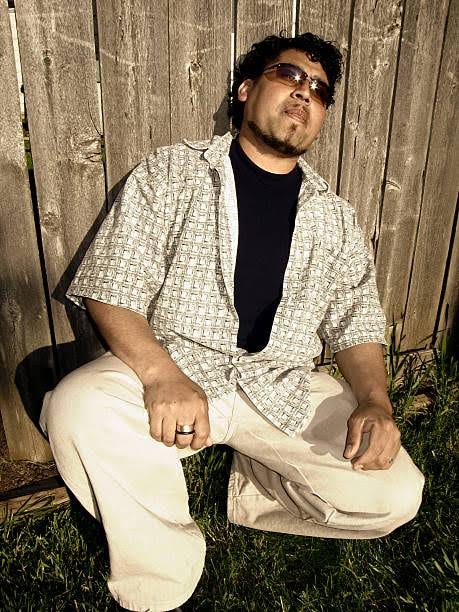
The challenge for martial artists is that we’re expected to be able to teach each of those levels. And that means you’re going to have to put on a different hat for each age level.
Like, seriously…you’re going to have to become a little schizophrenic.
One of the many skills in being a teacher is called “classroom management”. That doesn’t just mean getting your kids to shut up and be quiet. One of the school classrooms I took over in my studies to get my credential looked something like this: Thirty five kids. Six barely spoke English, if at all. One of those six had just come from Russia. The smartest kid was Chinese-American and often got bored while four of the kids were also special needs students who required extra attention. And every lesson has to make sure every one of them got the main lesson point without getting bored.
Getting that to successfully happen, to get every student to get the “point” of that math lesson, while getting the ADHD kids to focus and keeping the smart kids challenged without discouraging the kids having a hard time understanding the point or the English, in a forty-five minute window before moving on to the next subject…that is classroom management. It doesn’t necessitate a quiet classroom, and this is what you have to bring to your lessons on the dojo floor; is your lesson intended to make your students quiet, or to be able to fight?
If you’re teaching pee-wees, I recommend one thing: bring out your inner Robin Williams and have fun moving your brain at 100 mph. Teach them to be quiet on command by letting them be loud. Make a game of “make noise, make noise, make noise, okay, STOP!” Teaching pee-wees isn’t about breaking people’s arms. (That comes at the high school level.) Teaching pee-wees is about introducing them to the martial arts while teaching them to listen, to know the difference between right and left, and to know picking your nose in public isn’t good.
And teaching those things will not happen in a quiet classroom. Classroom management is playing the crowd, being an MC, being the guy behind the curtain guiding the seeming chaos while knowing you’re in control of everything. If your goal is to teach, you’re gonna have to be a bit of a performer. The ones who understand the knowledge you give them will respect you more than any drill sergeant yelling at them. Kaju practitioners with an interest in the performing arts need to get on the floor and start teaching.
One last point here, taught to me by my sempai Michael Val: Adults are just big kids.
Think on that…
No Music, No Life
And finally, music. Sweet, sweet music.
Music was one of the things that helped the depression I had as an elementary school student, all before I even found martial arts or knew what depression really was. As a young kid I’d rush to my bedroom after school to turn on the radio because I was scared of the silence in my home. I realized the magic that certain songs had for me, something I touched on here when I talked about the artistry of forms.
When I finally found the martial arts in elementary school, listening to music while training was a given. I trained harder, trained longer, and poured more of my soul into my training if good music was playing. By the time I found Kajukenbo, at the age of 17, martial arts without music just made little sense to me. Luckily, the instructor I found, Ron Esteller, was also a music nerd like me. Then again, his love and acceptance of music in class was partly the reason I knew I had found a new home. Even if his favorite music was disco.
(Okay, okay…so I will gladly say disco has grown on me. I have good memories of Santa Esmerelda playing in Sifu Ron’s class during those 20 minute long strides.)
I totally understand training in silence. Everyone’s brains work differently. But if you haven’t tried it yet, train with some music you like. Music that moves your soul, and makes you want to set the world on fire. Fighting is all about rhythm, after all, and sometimes that rhythm is a mental/spiritual thing more than physical.
As an instructor, I’ll always remember something Ron Esteller said when I interviewed him for my book:
“Now, some martial arts schools don't play music at all. I came from a school where Jim Juarez loved music too, and he just always had some music playing in the background. Maybe not as much as I do. I make it an intricate part of how we train, and play different kinds of music as we train. Everything from disco to traditional taiko drums to Hawaiian music…you know, whatever. I play my music for me. Everybody else is along for the ride.”
That makes sense to me, because an artist looks at a blank canvas, picks up the brush, and creates art; every week, I look at my students lined up, measure my plans for the day, turn on the music, and create art.
You can too, whether you’re teaching kids or adults. Make your class art. Messy art. Make it loud. That too, separates Kajukenbo from other arts in the way we balance the tradition with the modern day.

